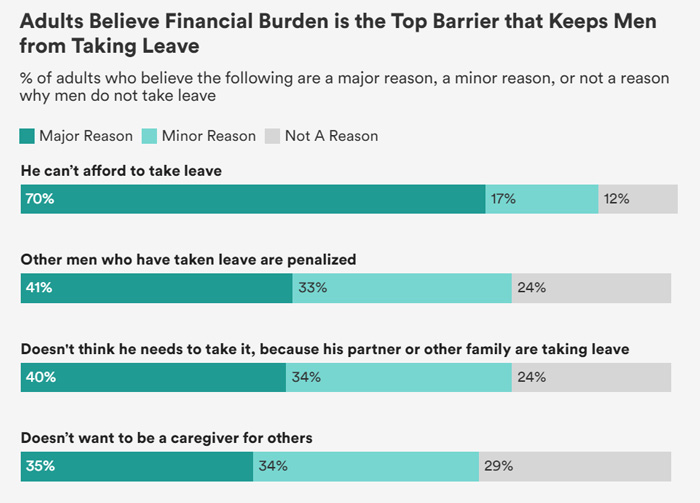Rather than thinking caregiving is something only women should do, Americans’ attitudes toward men giving care and taking caregiving leaves are evolving, most notably among men themselves.
Based on a nationally representative survey conducted in partnership with NORC at the University of Chicago, and five online focus groups, this report points to key barriers men face that may prevent them from taking time off from work to engage in caregiving. These include financial concerns, inadequate workplace and manager support, and family and cultural barriers. These barriers are particularly challenging for low and median-wage earners who have the least access to paid leave. None of these barriers are adequately addressed in the current ad hoc system in America that relies on private companies to decide to voluntarily offer paid caregiving leave, or in public policy, where a piecemeal system benefits only those lucky enough to live in the handful of states that offer the paid leave benefit to residents and adequately enable them to use it.


Key statistics from the report:
• Nearly half of mothers and fathers didn’t even take two days off work, paid or unpaid, after the birth or adoption of a child
• Six in 10 adults say they anticipate needing to take time off in the future to care for a new child or adult family member
• Men and women equally anticipate needing to take leave, but men lag behind women in actually taking it.
• 48% of fathers versus 55% of mothers have taken time off to care for a newborn, and 28% of working men versus 31% of working women have taken time off to care for a family member.
• 87% of adults say a reason men don’t take leave from work for caregiving is that they can’t afford it
• Of men who were able to take leave from work, 65% reported receiving some pay. Only 53% of women who took leave reported receiving some pay
• Workers in low-income households are the least likely to have access to paid leave. Just 41% of workers in households earning less than $30,000 annually had leave that was partly or fully paid, compared with nearly three-quarters of workers earning $100,000 or more annually.



